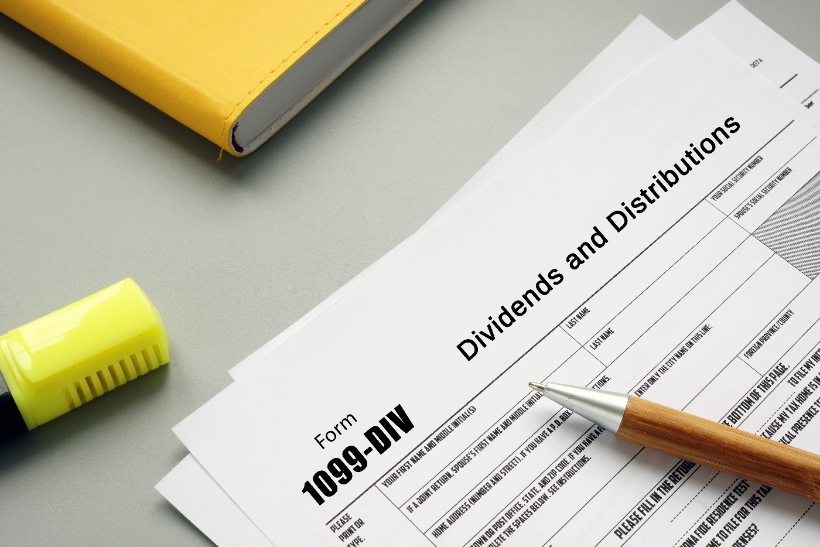Do Capital Gains Count as Income When I’m Doing My Taxes?
Published:
Gains, income, gravy train – it’s all the same, isn’t it? Not to Uncle Sam.
Capital gains do count as income for tax purposes. Getting any income from selling assets, such as mutual funds, stocks, and real estate, counts toward your income and could be subject to capital gains taxes. The amount of tax owed depends on the type of asset sold, the holding period, and your income.
Short-term capital gains are taxed at the same rate as the filer’s ordinary income tax rate. Long-term capital gains, those held for longer than one year, are taxed at preferential tax rates (0%, 15%, or 20%) depending on the filer’s taxable income.
The amount of capital gains included in the filer’s adjusted gross income (AGI) can push them into a higher tax bracket. However, only the amount of income that falls within that bracket is taxed at the higher rate, not the entire amount of income.
It is important for filers to accurately calculate their capital gains and any losses and incorporate them into their tax planning opportunities, taking into consideration the various types of capital gains, tax brackets, and filing status.
Seeking guidance from a qualified professional can help navigate the complex tax code and make informed decisions regarding the filer’s individual situation.
How Realizing a Capital Gain Affects Your Income
Realizing a capital gain can have a significant impact on your income and tax liability. If you sell an asset for more than you paid for it, the IRS calls that a capital gain. Depending on the holding period, it may be considered a short-term or long-term gain. The amount of your gain and your taxable income are crucial factors that determine your tax rate.
Whether you’ve sold stocks, mutual funds, or real estate, understanding how capital gains work is essential for any smart investor.
Capital Gains Rates or Ordinary Income Rates
Capital gains arise when you sell a capital asset like stocks, mutual funds, or real estate at a higher price than you purchased it. The tax on gains is variable based on the holding period of the asset. Short-term gains occur when you sell an asset you held for less than a year, while long-term gains are the proceeds from an asset held for over a year.
Short-term gains are taxed as ordinary income, meaning they add to your taxable income and are taxed at your marginal tax bracket. However, long-term gains are taxed at preferential tax rates, usually lower than ordinary income tax rates. The tax rate for net gains depends on your filing status and taxable income. The maximum rate for selling all types of capital assets, except collectibles or qualified small business stocks, is 20%, while the rate for selling collectibles is 28%.
Be sure to check with a tax professional for legal advice to have a sound basis for investment decisions. In certain circumstances, capital gains may be exempt from tax, such as gains that are below a certain threshold or gains from the sale of a primary residence. As your income increases, you may experience phased-out deductions, tax credits, Roth IRA or deductible IRA contributions.
What Can Move Me Into a Higher Income Tax Bracket?
Several factors can push taxpayers into a higher income tax bracket, including increased earnings, capital gains, and reduced deductions. The US tax code imposes various tax rates and filing statuses that affect how much you owe in income taxes. The tax rates go from 10% all the way up to 37%. It just depends on what you make and what your filing status is. The different filing statuses include married filing jointly, single filer, head of household, and married filing separately. Your taxable income mainly determines the tax percentage you’re liable for, which also takes into account your capital gains and losses.
Capital gains and itemized deductions are significant factors as they impact overall taxable income. Capital gains are taxed at their respective rates, depending on the holding period- long-term or short-term. On the other hand, itemized deductions, including state and local taxes, charitable contributions, and medical expenses, reduce taxable income. The current brackets for income tax include:
- 10% for incomes of less than $11,000
- 12% for incomes greater than $11,000 (or $22,000 for married filing jointly)
- 22% for incomes greater than $44,725 (or $89,450 for joint filing couples)
- 24% for incomes greater than $95,375 (or $190,750)
- 32% for incomes greater than $182,100 (or $364,200)
- 35% for incomes greater than $231,250 (or $462,500)
- 37% for income above $578,125 (or $693,750 for married filing jointly)
It’s crucial to take advantage of tax planning opportunities to minimize tax liability, such as maximizing retirement contributions and balancing capital gains losses. A knowledgeable tax professional or financial planner may provide comprehensive advice tailored to your individual situation.
What if my capital gains bump me into the next tax bracket?
No, capital gains will not push you into a higher tax bracket for ordinary income. However, they can increase your adjusted gross income, which could affect your eligibility for certain tax deductions and credits. It is important to factor in potential capital gains when tax planning to ensure that they do not have any unwanted effects on your tax situation.
Short-term and long-term capital gains are taxed differently. Whatever your ordinary income tax bracket is, that’s also your short-term tax rate.
Long-term gains are assets held for more than a year and are taxed at a preferential tax rate, which depends on your income and filing status.
This preferential rate is often lower than your ordinary income tax rate. It is important to keep track of your cost basis, or the purchase price of the asset, as this will determine the taxable capital gain. (And if you sell it for less than your cost basis, well, that’s a capital loss.)
What’s the Tax Rate for Long-Term Capital Gains?
When you sell a capital asset that you’ve owned for longer than one year and earn a profit, you’ll be taxed at the long-term capital gains tax rate. The long-term capital gains tax rate is a tax rate that assesses the percentage of the profit you keep from a sale after owning the asset for a year or more. This tax rate is different from the short-term capital gains tax rate, which applies to assets owned for a year or less. In the United States, the long-term capital gains tax rate is based on your income and varies depending on your income tax bracket.
Taxpayers in the 10% or 12% tax brackets pay 0% long-term capital gains tax.
Taxpayers in the 22%, 24%, 32%, or 35% tax brackets pay 15% long-term capital gains tax.
Taxpayers in the highest tax bracket of 37% pay 20% on long-term capital gains.
Yes, there is a preferential tax rate for long-term capital gains. The tax rate on long-term capital gains is lower than the ordinary income tax rate, which makes it an attractive investment option for taxpayers. The rationale for this tax preference is to encourage investment in long-term assets such as stocks and mutual funds, which can fuel economic growth.
However, there are some exceptions.
Exceptions to those low long-term capital rates
Although long-term capital gains are generally taxed at a lower rate than ordinary income, there are some exceptions that can impact how much tax is owed.
One major exception is for collectible assets, such as art or wine, which have a maximum tax rate of 28% regardless of how long they were held. In addition to this exception, high-income taxpayers may be subject to the Net Investment Income Tax (NIIT) surtax of 3.8%, which applies to certain investment income, including capital gains.
To understand how long-term capital gains taxes work, consider the example of Larry and Jane. Larry, a single filer, sells a mutual fund that he’s held for four years, resulting in a $10,000 long-term capital gain. Since Larry falls in the 24% tax bracket, he would owe $1,500 in capital gains taxes (15% of $10,000). Jane, a married filer, sells a rental property that she’s owned for six years, resulting in a long-term capital gain of $50,000. Since Jane’s income puts her in the top tax bracket, her capital gains tax rate would be 20%, resulting in $10,000 owed in capital gains taxes.
However, there are also scenarios where capital gains taxes may not be owed. For instance, if the sale of an asset occurs within an IRA, taxes may not be owed until funds are withdrawn from the account. As with any tax issue, it’s important to consult a qualified professional and rely on reliable sources, such as the IRS tax code, when making investment decisions.
You Can Still Pay 0% Long-Term Capital Gains If You Make Less Than …
Taxpayers who fall in the 10% and 12% tax bracket are eligible to pay 0% on long-term capital gains taxes if their taxable gains fall within certain limits. For the tax year 2021, single filers earning up to $40,400 and married couples filing jointly earning up to $80,800 can take advantage of this tax benefit.
However, taxpayers in higher tax brackets may still qualify for a portion of their long-term capital gains to be taxed at 0%. The percentage of long-term capital gains taxed at 0% ultimately depends on the taxpayer’s income level and tax bracket. For example, if a single filer earns $50,000 and sells stocks with a long-term gain of $5,000, $2,400 of those gains would be subject to 0% tax while the remaining $2,600 would be taxed at the capital gains tax rate that applies to their tax bracket.
It’s essential to note that some long-term capital gains may not be eligible for the 0% tax rate, such as gains from the sale of collectibles or artwork.
Primary Residence Capital Gains
If you have lived in your primary principal residence for two or more years, you should be eligible to receive a significant exclusion on federal capital gains tax. Currently, single tax filers are exempt up-to the first $250,000 in gains. Gains are calculated as any profit over the amount of your purchase price, plus any additional capital improvement you invested into your home, for example, a new driveway or an additional garage. Married Filing Joint taxpayers enjoy up-to $500,000.00 in tax free profit from the sale proceeds.. Note that any amount(s) over those thresholds would be subject to standard long term capital gains tax brackets.
Lived in your home for more than one year, but less than two years? The exclusion will not apply, however, you will be taxed at Long Term Capital Gain rates, compared to if you bought and sold in less than a year. Unfortunately in a less than 12 month scenario, any gain will be taxed as Short Term capital gains, and subject to ordinary income tax rates.
Taxpayers should research their states capital gains tax guidelines as it relates to the sale of their primary residence, as rules defer state by state,
What Is the Short-Term Capital Gains Tax Rate?
Short-term capital gains tax is a tax levied on any profit that is derived from the sale of assets that have been owned for less than a year. This type of capital gain is taxed at a different rate than long-term capital gains. In this article, we will discuss what the short-term capital gains tax rate is, how it works, and who is required to pay it. Understanding the short-term capital gains tax can help you make better investment decisions, plan your taxes effectively, and avoid any penalties for non-compliance.
There are some exceptions to this taxation, such as when short-term gains come from the sale of certain collectibles or qualified small business stock. Gains from the sale of collectibles (such as artwork, antiques, and precious metals) are taxed at a maximum rate of 28%, regardless of the taxpayer’s ordinary income tax rate. Additionally, gains resulting from the sale of qualified small business stock held for more than 5 years may also qualify for a lower tax rate.
In general, though, short-term capital gains are taxed as ordinary income and may be subject to a higher tax rate than long-term gains.
However, some taxpayers may be able to offset the tax impact of short-term gains with capital losses from the same year or with certain tax deductions. For instance, the deduction for investment interest expenses and the deduction for state and local taxes are two examples of deductions that may be available to reduce a taxpayer’s taxable income.



